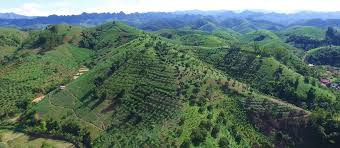
Small-scale farmers across the globe are struggling with mounting challenges, from climate change to food insecurity and biodiversity loss.
Rising temperatures, shifting rainfall patterns, soil degradation, and extreme weather events have turned farming into an increasingly risky endeavour.
Traditional methods of mono-cropping and overreliance on chemical fertilizers are proving unsustainable, threatening both rural livelihoods and the health of our planet. In this context, agroforestry – the integration of trees and shrubs with crops and livestock – emerges not as an experimental idea but as a proven solution that combines food production with environmental restoration.
Agroforestry is much more than just planting trees on farms. It represents a holistic farming system that strengthens resilience, enhances productivity, and provides multiple benefits that go beyond agriculture.
For farmers, it opens new streams of income and improves food security.
For the planet, it means healthier soils, reduced greenhouse gas emissions, and biodiversity preservation.
Simply put, agroforestry is a win-win approach, aligning ecological sustainability with economic empowerment.
The global evidence is compelling. According to recent research, agroforestry systems can increase soil fertility, improve water retention, and significantly reduce erosion.
- Zim needs more funds for livestock welfare: WPO
- Opportunities abound in organic farming
- Parliament ratifies Opec Fund loan to Zimbabwe of US$15 million
- Unlocking healthy soils’ potential in climate change mitigation
Keep Reading
Trees act as natural windbreakers, protecting crops from harsh weather. Their roots stabilize the soil while their foliage enriches it with organic matter.
By shading crops and livestock, trees moderate microclimates, reducing the risk of heat stress on animals and crop failure in times of drought.
Economically, the impact is equally impressive. Studies estimate that annual income from higher yields alone could increase by US$100–300 per hectare.
On top of this, diversified earnings from timber, fruits, nuts, fodder, medicinal plants, and other tree-based products could add anywhere from US$200 to US$2,000 per hectare over time.
Beyond direct income, farmers may also access payments for ecosystem services – such as carbon credits – as the world moves toward valuing climate-positive practices.
The International Fund for Agricultural Development (IFAD) has recognized this potential.
Between 2012 and 2022, agroforestry practices were included in 21% of IFAD-supported projects, compared to just 2% in the decade before.
These projects span diverse ecosystems – from tropical forests to drylands – and have proven particularly vital in fragile regions where building resilience is not optional but essential.
Agroforestry stands out as a natural climate solution.
By integrating trees into farming landscapes, carbon sequestration is significantly increased.
Trees absorb carbon dioxide while simultaneously providing oxygen and regulating local climates.
Moreover, agroforestry systems reduce the need for chemical fertilizers by enhancing soil fertility naturally, thereby lowering nitrous oxide emissions – one of the most potent greenhouse gases.
At the same time, agroforestry enhances biodiversity. In contrast to monocultures that devastate ecosystems, agroforestry landscapes mimic natural forests by offering habitats for birds, insects, and microorganisms.
This biodiversity, in turn, improves pollination and pest control, reducing reliance on harmful pesticides.
Agroforestry does not merely mitigate climate change; it actively restores ecosystems.
For Zimbabwe, a country where agriculture employs more than 60 percent of the population and contributes significantly to livelihoods, agroforestry is a transformative opportunity.
The country’s farmers – especially smallholders – face recurring droughts, erratic rainfall, and declining soil fertility.
Overreliance on maize monoculture, land degradation, and deforestation have worsened these challenges.
Agroforestry offers a pathway to rebuild soil health, diversify income sources, and create climate-resilient agricultural systems.
Zimbabwe’s soils are highly vulnerable to erosion and nutrient depletion. By planting nitrogen-fixing trees such as acacias and Faidherbiaalbida among crops, farmers can naturally replenish soil fertility.
The canopy of these trees provides shade during dry spells while allowing sunlight during the rainy season, making them ideal companions for crops like maize, sorghum, and millet.
Similarly, riparian buffer strips of trees along rivers can prevent soil erosion and improve water quality.
Rural households in Zimbabwe often rely heavily on a single staple crop, leaving them vulnerable to crop failure.
Agroforestry could transform this by introducing fruit trees like mango, guava, and avocado; timber trees for future harvest; and medicinal plants that hold both cultural and economic value.
These diverse products ensure year-round income and reduce dependence on food aid during lean years.
With climate change already manifesting through prolonged droughts, agroforestry can help smallholders build resilience.
Trees that provide fodder for livestock, such as Leucaena or mulberry, can keep herds alive during dry seasons.
Shelterbelts of trees can protect fields from strong winds, while deep-rooted species draw water from deeper layers of the soil, making farming less dependent on increasingly unreliable rainfall.
For Zimbabwe to adopt agroforestry effectively, policy support is essential.
Government extension services need to be retooled to promote agroforestry practices, while local communities must be engaged through training programs and incentives.
Microfinance schemes could help farmers manage the initial costs of planting trees, given that some benefits are long-term.
Additionally, Zimbabwe could tap into international climate finance and carbon markets by positioning agroforestry as a national climate adaptation and mitigation strategy.
Despite its benefits, agroforestry faces barriers to adoption. Farmers often hesitate because trees take years to mature, and the initial investment can feel daunting.
Land tenure insecurity also discourages planting long-term crops like trees.
For Zimbabwe, addressing these challenges means reforming land policies to guarantee farmers the security needed to invest in tree-based systems.
Public-private partnerships could provide seedlings, technical knowledge, and access to markets for agroforestry products.
Furthermore, a cultural shift is required. Many farmers still perceive trees as competing with crops rather than complementing them.
Education and demonstration projects are key to changing these perceptions.
Schools of agriculture, NGOs, and traditional leaders can play pivotal roles in promoting the benefits of agroforestry.
Agroforestry is not merely a farming practice – it is a vision for a greener, more resilient future.
It empowers farmers by diversifying income and securing food systems while simultaneously addressing global challenges such as climate change, biodiversity loss, and land degradation.
For Zimbabwe, adopting agroforestry could mean the difference between vulnerability and resilience in the face of a warming world.
The choice is clear: continue with unsustainable practices that erode our land and livelihoods, or embrace agroforestry as a transformative path forward.
With the right policies, community engagement, and international support, Zimbabwe can lead by example, showing how farmers and forests can thrive together.
* Gary Gerald Mtombeni is a journalist based in Harare. He writes here in his personal capacity. For feedback Email garymtombeni@gmail.com/ call — +263778861608









